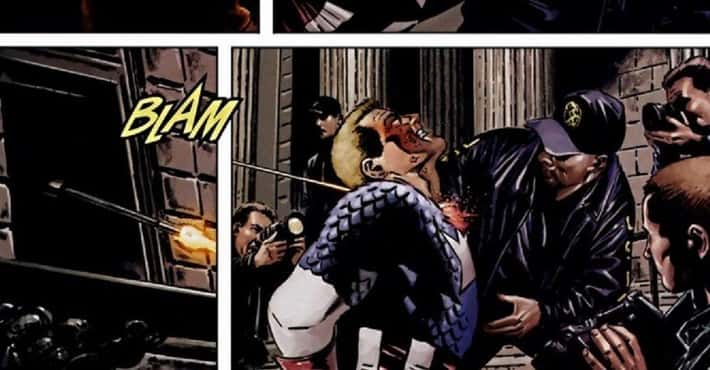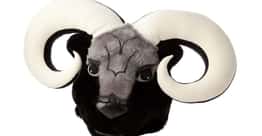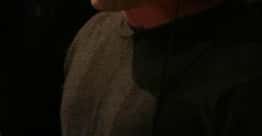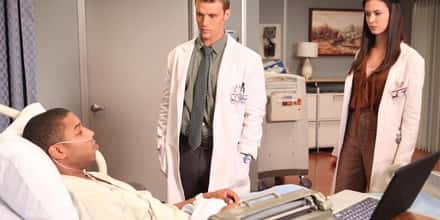
The Surprising Movies That Inspired And Directly Influenced The MCU
If you've ever been curious about what movies inspired Marvel Cinematic Universe movies, look no further. Yes, they often adapt popular story arcs from the comic books, but that isn't all. Part of what has made them successful and contributed to their consistent quality level is that they often model themselves on classic films. In some cases, that influence is quite substantial; other times, it's just key details and aesthetics here and there.
This has proven to be a winning approach. By looking to the classics, the MCU installments are drawing from success. They're borrowing elements that have already been proven to work and adapting those same elements into the established Marvel formula. This makes each movie different in tone and feel, despite the fact that all of them are interconnected.
The filmmakers have been very open in acknowledging their inspirations, which makes for some excellent viewing recommendations. If you've got a few favorite MCU adventures, you might also want to make sure you've seen the often surprising movies that directly influenced them.
One of the things critics frequently celebrated about Captain America: The Winter Soldier was its plot. Yes, there was action, but there was an equal amount of suspense generated from the story, which found Cap unraveling a shocking conspiracy. To capture a vibe audiences would be familiar with but would not expect in an MCU picture, writers Christopher Markus and Stephen McFeely looked to three conspiracy thrillers from the 1970s - Marathon Man, The Parallax View, and Three Days of the Condor - for ideas on how to structure the plot.
Marathon Man stars Dustin Hoffman as a history student who uncovers a conspiracy regarding stolen gems and a Nazi war criminal hiding in the United States. It is most famous for a scene in which the bad guy performs some painful (and unwanted) dental work on Hoffman's character. The Parallax View features Warren Beatty as a reporter who discovers that a multinational corporation is responsible for the assassination of a political candidate. Three Days of the Condor, meanwhile, casts Robert Redford as a codebreaker with the CIA. He believes the agency's bigwigs are behind the demise of his coworkers.
All three movies generate a sense of paranoia for both the characters and the audience. Knowing who can be trusted and who can't is part of the atmosphere. To underline The Winter Soldier's intention to replicate the paranoid feel of these '70s classics, Redford himself was hired to play Alexander Pierce, the Hydra leader who works as a double agent within S.H.I.E.L.D.
Avengers: Infinity War had the complex task of bringing together every significant character from the entire MCU up to that point. It could have been a great big mess, and directors Joe and Anthony Russo recognized that. To figure out how to navigate the story and give everyone quality time without watering anything down, they turned to a pair of '90s crime thrillers - Steven Soderbergh's Out of Sight and John Herzfeld's 2 Days in the Valley - for guidance. Both pictures utilize large ensemble casts and juggle multiple connecting storylines.
According to Joe Russo, "We always look to movies for an inspiration for the energy that we’re looking for, or a narrative construct that we want to be inspired by." Anthony added, "It helps when you are dealing with all these different types of characters and all these different tones that have been established in the various films and story lines, it becomes our organizing principle for tone. In terms of what the world is that we’re creating, what rules are we playing by, how does that filter and every character, no matter where they’re coming from has to intersect with the sort of reality of that tone."
The approach clearly worked, as Infinity War manages to give each hero their due, while still managing to mesh their individual arcs into the cliffhanger at the end.
- Photo: MGM / Walt Disney Studios Motion Pictures
There was no doubt that The Avengers was going to be a big deal. It was the payoff to an extensive build-up, one that would bring all the MCU heroes up to that point together for a big adventure. Writer/director Joss Whedon must have felt a lot of pressure. To figure out how to structure the story, he drew upon one of the greatest war movies of all time, The Dirty Dozen.
Robert Aldrich's 1967 film stars Lee Marvin as Major Reisman. He's tasked with training a ragtag group of lowlifes how to sneak across enemy lines and eliminate prominent Germans right before D-Day. The men have to learn to put aside their differences so they can work together on a common goal. In the end, they unite to complete the mission.
The Avengers replicates that general template, with the heroes - Iron Man, Captain America, Thor, Hulk, Black Widow, and Hawkeye - assembling, feuding over the best way to foil the villainous Loki, and ultimately putting their differences aside to defend New York City. Nick Fury, of course, is the Reisman of the picture.
- Photo: Paramount Pictures / Paramount Pictures
As the first official MCU movie, Iron Man had to set the template for everything that would come after. So what was director Jon Favreau's plan to deliver an exciting adventure that still remained true to the character development of the comics? He envisioned "a Robert Altman-directed Superman."
Altman was the auteur responsible for decades of provocative, ambitious films, including the masterpieces Nashville, McCabe & Mrs. Miller, and The Player. His works were notable for several recurring elements. One was a sly sense of behavior-based humor, which Iron Man certainly has in its interactions between Tony Stark and Pepper Potts, and between Tony and Rhodey Rhoades. He also worked against genre conventions, with many of his films featuring "heroes" who were deeply flawed. That certainly applies to the egotistical Tony Stark, who isn't the all-purpose do-gooder many superheroes are so often expected to be.
Ensemble casts with characters weaving in and out of each other's orbits were another hallmark of Altman's work. Robert Downey Jr. may be Iron Man's nominal star, yet the people, good and bad, in Stark's life are an essential part of the tapestry Favreau and his screenwriters create. It was RDJ and Favreau's risky, aggressively improvisational approach to building those very first MCU characters - once again, taking their cues from Altman - that made Iron Man stand out as much as it did.
The 1980 movie Flash Gordon can cause heated arguments among movie fans. Some derogatorily dub it a cheesy, stupid sci-fi flick. Others argue that an outrageous tone was the specific intent of director Mike Hodges, so it's therefore a smashing success. The makers of Avengers: Endgame obviously fall into the latter category, citing it as an influence on the biggest, most spectacular MCU movie so far.
Joe Russo called Flash Gordon "probably the film that I watched more than any other movie." It's more than the over-the-top visual style or the nonstop action that helped shape Endgame. Russo added:
You have some intense moments in the film. Like 45 minutes into the movie they actually are going to kill the lead character by executing, and Hodges spends a good 10 minutes making you believe they're going to kill him. And then they do kill him. He just happened to get saved by some space magic, but I find the tone of the movie so unique. It's hard to find another film that plays in the sci-fi arena that has the same tone as Flash Gordon, where it's as intense as it is in moments and as silly as it is in others.
Of course, MCU fans recall that Gamora unexpectedly loses her life in Endgame, and there are moments where humor and intensity bump up against each other. Once you're aware of the Flash Gordon influence, it's easier to spot those parallels.
A lot of people were surprised by Thor: Ragnarok. It emphasized comedy a lot more than its predecessors, Thor and Thor: The Dark World. It also physically looked different than the first two entries, with a bright candy-colored palette. Credit for both those things goes to director Taika Waititi, who wanted to put his own stamp on the MCU.
To do so, he turned to Alejandro Jodorowsky, the noted surrealist filmmaker behind, among others, the cult favorite The Holy Mountain. That picture and the concept art for his abandoned adaptation of Dune were key in helping Waititi develop the visual style he was going for. "Sometimes we didn’t capture it, but it was definitely on the moodboards a lot,” he said. “Just that style. Just some of the sets and some of the colors.”
For the comical interplay between Thor and Hulk, the director studied the timing in the classic British buddy comedy Withnail and I. Believing Ragnarok could be a space-set version of that 1987 film - which follows two unemployed actors vacationing together in the country, with hilariously strange results - Waititi pitched Marvel on the idea of significantly upping the comedy for this Thor outing. They agreed, and the movie became the most critically acclaimed and highest-grossing entry in the series.
More Thor: Ragnarok- Dig Deeper...All The Easter Eggs Hidden In Thor: Ragnarok
- And Deeper...Everything You Need To Know About Ragnarok Before Watching The New Thor Movie
- #54 of 178 onThe 150+ Best Movies With Aliens
Ryan Coogler was determined to bring something special to Black Panther. It was the first superhero movie of the modern era to have a Black lead character. He was therefore intent on delivering a movie that worked visually and as entertainment, but also had genuine substance.
The style of the movie was influenced by Blade Runner, Ridley Scott's 1982 sci-fi classic. Coogler said watching that movie helped him in "dealing with a future city." As with the world Scott created, the technologically advanced nation of Wakanda feels fully realized. It's almost like a real place, even though we know it isn't.
On a substantive level, he was inspired by his self-professed favorite film, A Prophet, Jacques Audiard's 2009 drama about an Arab man in a French prison. What does that have to do with Black Panther? According to Coogler, it's "a story about a character who goes into a place without an identity, which is like a death sentence, and comes out of it having used the fact to his advantage. He comes in with nothing and leaves with everything." He felt a similar character arc would be fitting for T'Challa.
Spider-Man has always been different, in that he's an adolescent superhero. Jon Watts took that idea to heart when directing and co-writing Spider-Man: Homecoming by channeling the spirit of those '80s teen classics from John Hughes - The Breakfast Club, Pretty in Pink, and Ferris Bueller's Day Off.
"Those were the movies we grew up on," Watts explained to IndieWire. "I remember that age and you’re just constantly screwing up. You don’t know what to do yet, and you don’t know where you fit into the world."
That's the arc he created for Peter Parker in his MCU Spidey tale. Peter has good intentions that often yield bad results he never intended, and he struggles to be both a normal high school student and a superhero. One scene even pays direct homage to Ferris Bueller's Day Off. The sequence in which Spider-Man chases some bad guys through a neighborhood is reminiscent of the one in which Ferris races through his own neighborhood to get home before he's caught playing hooky.
- #295 of 769 onThe Most Rewatchable Movies
- #12 of 33 onThe Best Movies In The Marvel Cinematic Universe, Ranked
- #15 of 185 onThe Greatest Comic Book Movies Of All Time
- Photo: Paramount Pictures / Paramount Pictures
If you're going to take your cues from a classic, Raiders of the Lost Ark is an excellent choice. And that's precisely what director Joe Johnston and his team did with Captain America: The First Avenger. The movie, of course, is a rousing adventure with an old-fashioned hero taking on the Third Reich. There's a love interest, a heinous villain, and plenty of scenes in which the hero gets to use his signature weapon - just like Steven Spielberg's original Indiana Jones movie.
Johnston freely admitted that he and his crew "used Raiders as a template when we were developing the story." When they got to a point at which they weren't sure which way to go with the story, Indy provided inspiration. "Sometimes when we had questions and we were stuck we would say, 'What would Indiana Jones do? What would be the answer to this in Raiders of the Lost Ark?'"
Even the tone of The First Avenger owes a debt to Spielberg's movie. Johnston added, "I’ve always loved Raiders and the great achievement of it was the tone and the fresh feeling of the movie. It was period but didn’t feel like it was made in the period. It felt like a contemporary film about this period in the past, and that is the goal we have."
- Dig Deeper...Behind-The-Scenes Facts From Captain America: The First Avenger That Demand A Rewatch
- #223 of 264 onThe 200+ Best War Movies Of All Time
- #135 of 769 onThe Most Rewatchable Movies
Thor is a little different than most Marvel superheroes in that he's not an entirely original creation. Instead, he's based on the Norse god of thunder. Something about him has an older quality as a result. This is part of what drew director Kenneth Branagh to the original Thor film. Branagh, who directed six cinematic Shakespeare adaptations prior to taking on the MCU epic, saw some similarities between Thor's story and the great works of the Bard. He also realized that he could use qualities from Shakespeare's work within the structure of a big-budget story featuring this particular hero. While working on the film, he suggested that actor Tom Hiddleston imbue Loki with the same kind of brotherly envy possessed by Edmund in King Lear, as well as the scheming quality Cassius has in Julius Caesar.
Branagh similarly envisioned Thor as being something of a Marvel version of Henry V (which he turned into a movie in 1989). He told io9:
I think the connection, if there is one, is that the stakes are high. So in something like Henry IV or Henry V, where the young prince is a reckless man who falls into bad company: Could that prince be the king? [In Thor], our flawed hero who must earn the right to be king, but I think what's key is the stakes. There it's Europe and England in power and here it's the universe. It's when that family has problems everybody else is affected, so if Thor throws a fit and is yelling at his father and is banished, suddenly the worlds are unstable.
More Thor- #86 of 178 onThe 150+ Best Movies With Aliens
- #118 of 769 onThe Most Rewatchable Movies
- #23 of 33 onThe Best Movies In The Marvel Cinematic Universe, Ranked
Guardians of the Galaxy is pure fantasy. After all, it's got a talking raccoon and a tree-person. It's a little incongruous, then, to learn that writer/director James Gunn relied on a true story for guidance on sections of his film. Specifically, he has cited The Right Stuff, Philip Kaufman's 1983 epic about the Mercury Seven astronauts, as an influence.
According to Gunn, "The Right Stuff was probably the movie we referenced more than any other on set, because we really wanted the feel of those old spacecraft [in] our spacecraft, to make them feel real and grounded. Both in their design and the way they move, the way they interacted with the atmosphere when they are outside."
What this means is that he didn't want the spaceships in Guardians to feel like invincible vehicles. He wanted them to seem complicated, so we'd know the characters had to be intelligent in order to fly them, and to seem like things that could be subject to damage or malfunction, so we'd understand the heroes could be imperiled inside of them.
MCU movies all follow a certain formula, but shake things up by melding that formula with various cinematic types. Ant-Man, for example, is a superhero movie and also a heist movie. The entire plot revolves around Scott Lang breaking into Darren Cross's highly secured office. The reason? To swipe and destroy the prototype Cross has created using Hank Pym's miniaturizing technology, which he plans to weaponize. Sure, there's plenty of superhero action. The plot, however, is patterned as a complex mission that needs to be precisely planned and executed.
To achieve the necessary balance between humor, action, and "Can he pull this off?" tension, director Peyton Reed knew just where to turn for inspiration. He told The Japan Times, "I looked at a lot of different heist movies. I looked at both versions of Ocean’s 11 - the George Clooney version and the Frank Sinatra version. I looked at The Thomas Crown Affair, I looked at a lot of 1960s and '70s heist movies just to get a feel for the rhythm of those movies, and also it inspired us to add to our movie, and to make it fun, because at its core it’s a comedy."
Ant-Man works because it replicates the qualities that made those classic capers so much fun. All of them make the viewer feel like a co-conspirator in the scheme.
More Ant-Man- Dig Deeper...The Best Easter Eggs And References Hidden In 'Ant-Man'
- And Deeper...Ant-Man's Greatest Villains & Foes
- #242 of 769 onThe Most Rewatchable Movies
Many of the MCU movies take place, at least in part, in fantasy worlds. Doctor Strange takes that idea to the extreme, with visuals that fold into themselves like a kaleidoscope, and trippy, colorful detours into other dimensions. You may wonder how someone comes up with the look of something like that. It turns out the creative minds behind Doctor Strange tried to emulate the feel of Disney's Fantasia, the 1940 film that marries classical music to wild, imaginative animation.
Cinematographer Ben Davis told the British Academy of Film and Television Arts that Doctor Strange "has a very psychedelic grounding, and it’s not your typical Marvel action movie. Most of the work within it is about other dimensions. And I described it, I think, when I was talking to Marvel as Marvel’s Fantasia, in a way, because it’s so sort of out there and different to everything else that they’ve done."
More Doctor Strange- #184 of 769 onThe Most Rewatchable Movies
- #11 of 33 onThe Best Movies In The Marvel Cinematic Universe, Ranked
- #18 of 185 onThe Greatest Comic Book Movies Of All Time
'Ronin,' 'Heat,' And The First 'Mission: Impossible' Were Key Reference Points On 'The Winter Soldier'
Captain America: The Winter Soldier's plot may have been influenced by '70s political thrillers, but its action scenes drew from very different pictures. For the causeway sequence, in which the Winter Soldier attacks Captain America and Natasha in a vehicle, the Russo brothers wanted to capture "that camerawork and that energy" from Michael Mann's Heat, particularly the famous shootout scene.
The car chase featuring Nick Fury was also inspired by the high-energy chase scenes in Brian De Palma's original Mission: Impossible, as well as John Frankenheimer's all-time great car chase from Ronin. Joe Russo explained, "What we liked about borrowing from De Palma is the first Mission: Impossible was the last time anybody had done sort of this protracted De Palma kind of sequence with this tension. And then the second half of that chase is Ronin, you know. It’s influenced by Frankenheimer’s work in Ronin and all the intensity and visceral quality of the car chases in that movie."
The key word there is "visceral." The Russos were aiming to create intense action scenes that - as Mann, DePalma, and Frankenheimer had done - make the audience feel as though they're a participant rather than merely a spectator.
Making the third film in a series is always a challenge, because finding a new angle from which to approach the characters or the general scenario is tricky. Iron Man 3 got around that by taking some cues from classic movies of the 1970s, a director-driven era in which Hollywood was willing to make daring, even non-commercial pictures.
According to co-writer Drew Pearce, the movie's portrayal of the villain, the Mandarin, was influenced by the character Marlon Brando portrayed in a Francis Ford Coppola masterpiece.
"[Director/co-writer] Shane [Black] and I always meant him to be, as well as an analogue for real life, a riff on Colonel Kurtz in Apocalypse Now," Pearce explained. He also said that this was "the most entertaining and surprising version we could find" of the character. What he means is that, like Kurtz, the Mandarin is a mysterious figure who turns out to be something quite different from what the hero expects.
Another '70s influence came in the way Tony Stark is portrayed in this third outing. Pearce compared him to the flawed cinematic heroes of the era, like Popeye Doyle, the cop played by Gene Hackman in The French Connection. With Doyle, Stark, and others, "the idiosyncrasies of the heroes is what made them exciting." He particularly praised the way Robert Downey Jr. conveyed the "damaged brilliance that the '70s guys had."
More Iron Man 3- #300 of 769 onThe Most Rewatchable Movies
- #24 of 33 onThe Best Movies In The Marvel Cinematic Universe, Ranked
- #64 of 185 onThe Greatest Comic Book Movies Of All Time
Whereas the original Ant-Man was a heist picture, Peyton Reed wanted to go a slightly different route for the sequel, Ant-Man and the Wasp. Specifically, he envisioned a propulsive comedic tone, where the stakes keep getting more and more humorously dire for the lead characters. Martin Brest's Midnight Run and Martin Scorsese's After Hours were models for his own work.
Midnight Run stars Robert De Niro as a bounty hunter bringing in a suspect (Charles Grodin) who's perpetually trying to escape. After Hours, meanwhile, details the efforts of a cashless man (Griffin Dunne) to get from one part of New York City to another late at night. He's beset by a series of absurd problems in the process.
Of After Hours specifically, Reed said, it "is just constant forward momentum. It’s just like a director desperate to get out there and make a movie that moves. I like the energy of that movie. It’s about a guy just trying to do one thing and all these complications happen." If you've seen Ant-Man and the Wasp, you know it has a similar pace to these movies, with the heroes on a journey that requires them to constantly overcome hurdles.
More Ant-Man and the Wasp- Dig Deeper...Who Is The Wasp?
- And Deeper...Easter Eggs In 'Ant-Man & The Wasp' You Definitely Missed
- #21 of 33 onThe Best Movies In The Marvel Cinematic Universe, Ranked






































